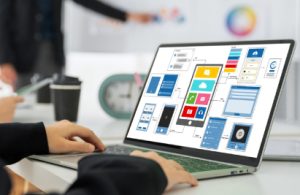The design phase of application development is a crucial step in the software development lifecycle (SDLC). This phase translates the requirements gathered during the previous stages into a blueprint that guides developers and designers. By understanding the significance of the design phase, stakeholders can better appreciate how it influences the overall success of an application.
Understanding the Design Phase of Application Development
The design phase of application development is where ideas begin to take shape. After gathering requirements through meetings, interviews, and surveys, the development team crafts a detailed plan that outlines how the application will function. This phase typically involves creating wireframes, prototypes, and detailed specifications that serve as the foundation for the actual coding and development.
Key Components of the Design Phase
- Wireframes and Mockups: One of the first steps in the design phase of application development is creating wireframes and mockups. These visual representations outline the application’s layout, navigation, and overall structure. Wireframes are simple sketches that provide a basic idea of how the app will look, while mockups offer a more detailed view, including colors, fonts, and images.
- User Experience (UX) Design: The design phase focuses heavily on user experience. Designers consider how users will interact with the application, ensuring that it is intuitive and easy to navigate. This involves conducting usability testing and gathering feedback to refine the design further.
- User Interface (UI) Design: While UX design focuses on the overall experience, UI design concentrates on the aesthetic elements. This involves choosing color schemes, typography, and iconography that reflect the brand identity. An effectively designed UI can greatly enhance user engagement and satisfaction.
- Technical Specifications: The design phase of application development also includes creating technical specifications. These documents outline the architecture, databases, APIs, and any third-party integrations required for the application. Clear technical specifications help developers understand the system’s constraints and capabilities.
- Prototyping: Prototypes are an essential part of the design phase. They provide a working model of the application, allowing stakeholders to test features and functionalities before full-scale development begins. Prototyping helps identify potential issues early in the process, saving time and resources.
Importance of the Design Phase
The design phase of application development is not just about aesthetics; it plays a vital role in ensuring that the final product meets user expectations and business objectives. Here are some key reasons why this phase is essential:
- Clarity and Direction: A well-defined design provides clarity for developers, reducing ambiguity and miscommunication. This ensures that everyone involved understands the project’s goals and requirements.
- Cost-Effectiveness: Investing time in the design phase can prevent costly changes later in the development process. Identifying and addressing issues during the design phase is much more economical than fixing them after coding begins.
- Enhanced User Satisfaction: A user-centered design approach improves the overall user experience, leading to higher satisfaction and retention rates. By prioritizing user needs and preferences, developers create applications that resonate with their target audience.
- Efficient Development: When developers have a clear design to follow, they can work more efficiently and effectively. This minimizes the likelihood of delays and ensures timely project completion.
Conclusion
In conclusion, the design phase of application development is a foundational step that influences the entire development process. By investing in thorough design practices—such as creating wireframes, conducting user testing, and establishing technical specifications—teams can develop applications that are not only functional but also user-friendly and visually appealing. This phase ensures that developers have a clear roadmap to follow, ultimately leading to a successful application that meets both business and user needs. Understanding the importance of the design phase is essential for anyone involved in application development, as it lays the groundwork for a project that can thrive in a competitive marketplace.
By emphasizing the design phase of application development, organizations can ensure that their applications stand out and deliver value to their users, creating a positive impact on their overall business success.





